Rena Birnhack née Wohlfeiler

The "Save the Memory" project is a series of film interviews with witnesses of history from 1939-
1956. It was created to preserve the memory of heroines and heroes from this period and record
their experiences. At the beginning of the film appears a blackboard with a white inscription "Rena
Birnhack, maiden name Wohlfeiler, saved by Oskar Schindler".
The protagonist of the film is Rena Birnhack, born in January 1927. She was a prisoner of the German
Nazi concentration camps Plaszow, Auschwitz-Birkenau, and Brünnlitz, and was rescued by Oskar
Schindler. The frame covers her from the shoulders up. She is sitting in a green chair, with a brown
curtain in the background. The woman is 88 years old and has short, curly brown hair. Her lips are painted with pink lipstick. She is dressed in a white sweater and black jacket.
Throughout the film, she shows footage from her private archive, and photos of her family and Krakow.
At the end of the film appears a blackboard with the blue logo of the Historical Museum of the City of
Krakow and the white logo of Oskar Schindler's Emalia Factory Lipowa 4. At the bottom the date of
the film - 2016.
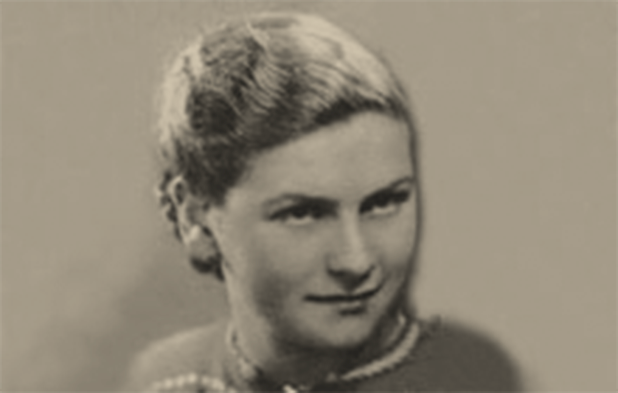
Rena Birnhack née Wohlfeiler
1927

Black and white portrait photo of young Rena. The woman has her light-colored hair pinned up. She is dressed in a sweater and wearing a pearl necklace. She is not looking straight into the camera.
Rena Birnhack née Wohlfeiler (born on 29th January 1927, Krakow), the daughter of Róża Feigel née Goldberger and Ignacy. A prisoner in German Nazi concentration camps in Płaszów, Auschwitz-Birkenau, and Brünnlitz, saved by Oskar Schindler.
Initially Rena’s parents lived at 16 Siemiradzkiego Street where their two daughters, elder Halina (1926 − 2002) and younger Rena, were born. The flat was situated on the ground floor, so little Rena, who often sat by the window, used to observe the world. Around 1931 the Wohlfeilers moved to a tenement house at 2 Gołębia Street, where they lived in a five-room flat on the third floor. Their financial situation was good – they had a car and a telephone, and Rena’s father had a good job. He was a sales representative at Suchard Polish-Swiss Chocolate Factory; Rena’s mother dealt with both her daughters’ upbringing and keeping the household, as assisted by her housekeeper Leosia, and she was a social activist.
The Wohlfeilers were an assimilated family who spoke Polish at home. Moreover, they were very sociable; in the evenings they often went out to the theatre, dance parties, or Feniks in the Main Square, which was a trendy place at that time. Only on the most important Jewish holidays did Rena’s father take part in services in Mordechai Tigner Synagogue at 28/30 Grodzka Street or in the synagogue at 24 Szpitalna Street.
Rena attended Queen Jadwiga State School at 16 Loretańska Street; she was one of three Jewish schoolgirls in her class. She had many classmates who used to visit her frequently, the reason for which may also have been the chocolate they were treated to. However, she made friends with only one of them – Krysia Waniowska. The girls often spent time with each other, studied together, did their homework, and had dinners at Rena’s. Katarzyna and Stanisław Waniowski, Krysia’s parents were the owners of a farm in the Wola Justowska area; in the morning they would sell cabbage in the Stary Kleparz market, and in the afternoon – flowers in the Market Square.
What is more, Rena attended ballet classes in a studio situated in the Market Square.
It was in 1938 that Rena’s mother got involved in charitable activities. In cooperation with lawyer Dawid Schlang, Ph.D. (born on 8th July 1901), who worked for Rena’s father, she brought from Poznań to Krakow thirty-seven people displaced to Poland from Nazi Germany. She provided accommodation for thirty of them in her husband’s office adjacent to their flat. Two other married couples, a childless one and one with three sons, found shelter in her house on Gołębia Street.
When the war broke out in 1939, Rena’s father, like many Krakow citizens, evacuated to the east to get to the Lviv neighborhood and then returned to Krakow. It was then that the burden to support the family was taken over by Rena’s mother who started to sell a variety of objects from their flat to feed her family. Leosia helped supply them, bringing meat and other products from the countryside. Rena still went to school, 6th grade, for yet a few weeks, however, by the German occupier’s decision, schools were closed for Jewish children on 11th December 1939. The Germans seized their big flat in Gołębia Street; they could keep one room only, and four others were occupied by the Germans: two women and a man. Rena’s mother was forced to dismiss Leosia, and, with her juvenile daughters, had to serve the German lodgers ever since. In Rena’s memories, a German appears as one who happened to present rationed food vouchers which were then used by her and her mother in a German shop. Ignacy found a job in a small glazier’s workshop at 18 Sebastiana Street, that hired four workers, including two Jews. By an ordinance by Governor Hans Frank on 26th October 1939, Rena was forced to work for the Jews, clearing streets of snow. As far as she recollects, it was then that she was humiliated twice: firstly, by the Germans who ordered her to perform such work; and secondly, by the Poles, since not all Krakow citizens sympathized with the Jews in such situations or brought them tea and other things; some people enjoyed what happened to the Jews and spat at them.
In 1940 the Germans ordered to displace the Jews from Krakow. Only 15 thousand people crucial for the economy were supposed to stay in the city. The Wohlfeilers managed to obtain permission to stay in Krakow, and they moved to a ghetto established in the Podgórze area in March 1941. They lived at 4 Węgierska Street for over a year. They shared a small flat with the three families invited by Rena’s mother. As convinced by lawyer Dawid Schlang, Ph.D., they founded a confectionery in Józefińska Street, which was situated next to the gate to the ghetto, which was why it was called the “Confectionery next to the gate”. At first, a confectioner was employed, however, he was murdered during the displacement action in October 1942; his duties were taken over by Rena’s mother and Halina, her elder sister. When they ran out of products, Rena used to sneak through to the Aryan side to get some goods, she bought old pastries in Słodka Dziurka confectionery at reduced prices. On proper “freshening” they were sold successfully.
In 1942, during the displacement action in June, when the Germans executed about 600 people in the ghetto streets in the first week of June, and about 7,000 were transported to gas chambers in Bełżec, around 12,000 people were left in the ghetto. On 20th June 1942, under the ordinance of City Governor Rudolf Pavlu, the ghetto area was reduced to the area between the Krzemionki Foothills and Tarnowska Street (present-day Limanowskiego Street). The Wohlfeilers’ flat at 4 Węgierska Street ended up beyond the borders of the reduced ghetto. Therefore, following the order to move to the reduced ghetto until 25th June 1942, the Wohlfeiler family moved to Nadwiślańska Street.
For a few weeks, Rena lived in Wola Justowska in the house with a beautiful garden owned by the family of Krysia Waniowska who had already been her friend before the war. She was introduced as a cousin. She could enjoy life beyond the ghetto walls, but she returned to the ghetto for fear she would unintentionally give away her benefactors-protectors, and because she missed her parents.
Rena’s mother was a social activist and a member of the Voluntary Citizens’ Committee which consisted of 30 people who occupied high social and financial status. The purpose of the Committee was to support the Social Welfare Department of the Jewish Council through the organization fundraising, food and warm clothes’ collection, and their distribution to the poorest.
The Wohlfeilers were aware of the necessity to have a safe job in time of occupation, which would protect them to a certain extent from raids or displacement. The sense of safety was ensured by employment in a plant whose products satisfied the needs of the war industry of the Third Reich. Therefore, Róża bought sewing machines and endeavored to get a job for her daughters and husband in a clothing factory owned by Viennese entrepreneur Julius Madritsch. Halina, Rena, and Ignacy became a part of a staff of around 800 people, mainly the Jews, who sewed working clothes and uniforms and repaired worn-out overcoats and uniforms sent from the front.
On 13th March 1943, upon the ghetto liquidation, the Wohlfeiler family was displaced to Płaszów forced labor camp (which was converted into a concentration camp in January 1944), from which, together with other prisoners, they were brought to work at 3 Rynek Podgórski Street where the clothes’ plant was located. Then, Madritsch obtained a permit to establish a sub-camp, and he transferred the factory to the Płaszów camp area on 15th August 1943, creating an area surrounded by barracks no. 111, 115, 121, 125, 126 and 127. It was the biggest private company in the camp, and the working and living conditions were there much better than those in other camp institutions. It was believed that Madritsch got on well with Amon Göth, the camp commandant, who was to gain profit from the revenue of the factory, and that is why the plan was favored.
It was in Płaszów camp that Rena met her future husband Ignacy Birnhack who was placed there after 2nd September 1943, which was upon the liquidation of the ghetto in Tarnow, where he moved from Krakow at the beginning of the occupation time. Ignacy worked for Madritsch as well.
By an agreement between Julius Madritsch and Oskar Schindler, the latter evacuated not only his factory (DEF) but also her Jewish workers west to Brünnlitz – in Autumn 1944 about 60 Madritsch’s workers were enlisted for transportation to the camp in Brünnlitz, the sub-camp of KL Gross-Rosen. According to Rena Wohlfeiler’s coverage, it was through her efforts that Ignacy was entered into the list regarding AL Brünnlitz. During the selection at the assembly square, she ran towards Raymond Tisch, Madritsch’s co-worker, risking death, and gave him a piece of paper with her beloved’s name on, it and a diamond ring, expecting that Tisch would know who to bribe.
All in all, Ignacy Birnhack (17th February 1917 – 21st December 2013), like the Wohlfeiler family, was entered into the transport list of 21st October 1944 no. 68841; he was the only member of his family to survive.
On 15th October 1944, Rena’s father and future husband were evacuated through KL Gross-Rosen to AL Brünnlitz. The transport of 300 women, among whom Róża, Halina, and Rena, left Krakow on 21st October 1944. Before they reached their destination in November 1944, the women were kept in KL Auschwitz for three weeks. That was because of the lack of female staff at AL Gross-Rosen, who could shave the female prisons due to the obligatory quarantine. That was already in KL Auschwitz; the razors were dirty and blunt, which resulted in Rena’s numerous injuries.
It was in Brünnlitz that Rena had seen Schindler for the first time. He took her, sick and dirty, out of the carriage. When she gained more strength, she started working. She took night shifts and then she was entitled to another portion of food. Schindler used to carry sandwiches, prepared by his wife Emily, in the pocket of his jacket. Rena knew about it and used to reach for them with Schindler’s consent.
After the war had finished, Rena Wohlfeiler did not come back to Krakow; accompanied by Ignacy Birnhack she left for Israel illegally through Prague, Germany, the Netherlands, and Belgium. They settled in Haifa in 1951 and were soon joined by her sister and parents. In the newly established state of Israel, the family founded Manamim, a confectionery-producing company that has been operating until the present. After the war, Oskar Schindler maintained close relations with the family. Whenever he stayed in Israel, he was always hosted by the Wohlfeilers who always testified to his heroic deed in time of the occupation.
Rena Wohlfeiler-Birnhack has a son and a daughter, 2 granddaughters, 3 grandsons, 4 great-grandsons and 2 great-granddaughters.
Gallery
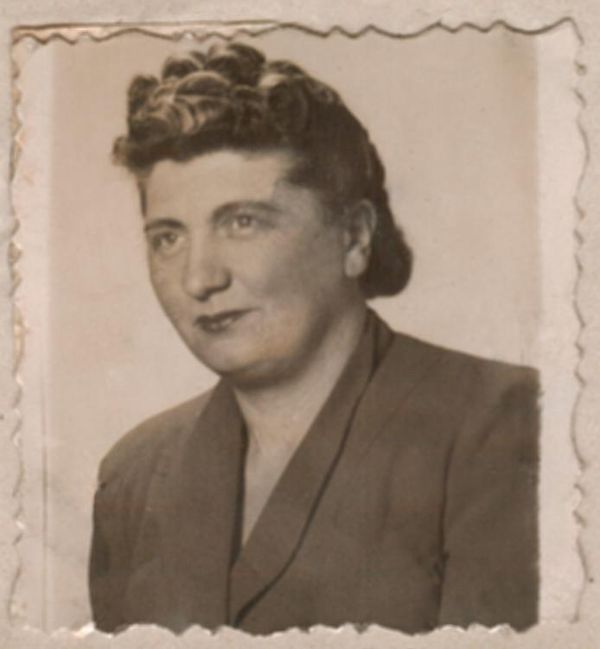
Róża Wohlfeiler, Rena’s mother, Krakow around 1941, the property of the National Archives in Krakow

Black and white portrait photograph of Rena's mother Roza Wohlfeiler. The woman is photographed up to her chest. She is about thirty years old, with dark, bundled, curly hair and lipstick-painted lips. She is dressed in a jacket.
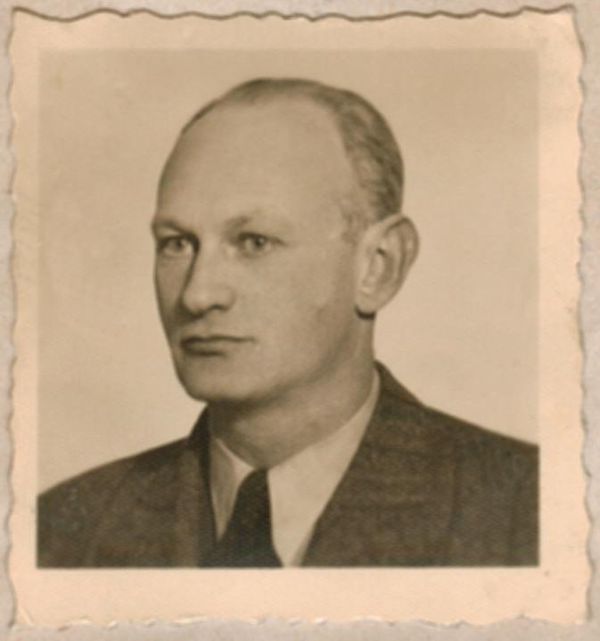
Ignacy Wohlfeiler, Rena’s father, Krakow around 1941, the property of the National Archives in Krakow

A black and white photograph of Rena's father Ignacy Wohlfeiler. The man is framed to his shoulders. He is about thirty years old, with light hair, sparse eyebrows and narrow lips. He is dressed in a white shirt, black tie and dark jacket.
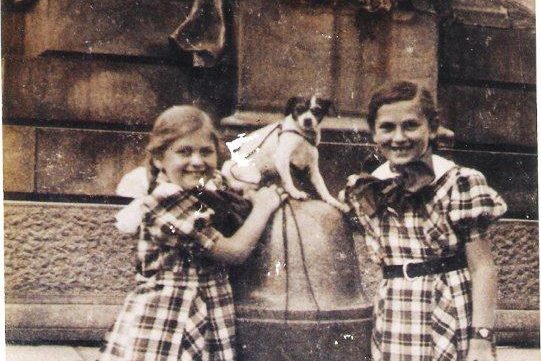
Rena and Halina Wohlfeiler with their dog Kropelka in the Main Square, Krakow before 1939, private property

Czarno-białe zdjęcie Reny i Haliny Wohlfeiler z psem Kropelką na Rynku Głównym w Krakowie. Siostry stoją przy szerokim, niskim słupie łączącym barierki przed pomnikiem Adama Mickiewicza, na którym trzymają małego, biało-czarnego psa. Dziewczynki mają około dwunastu lat, ubrane w identyczne, czarno-białe, kraciaste sukienki i białe buty. Halina ma ciemne włosy, zaplecione w dwa warkocze, czarny pasek na sukience oraz zegarek na lewym nadgarstku. Rena jest młodsza, ma jaśniejsze włosy i dwa warkocze z kokardkami.
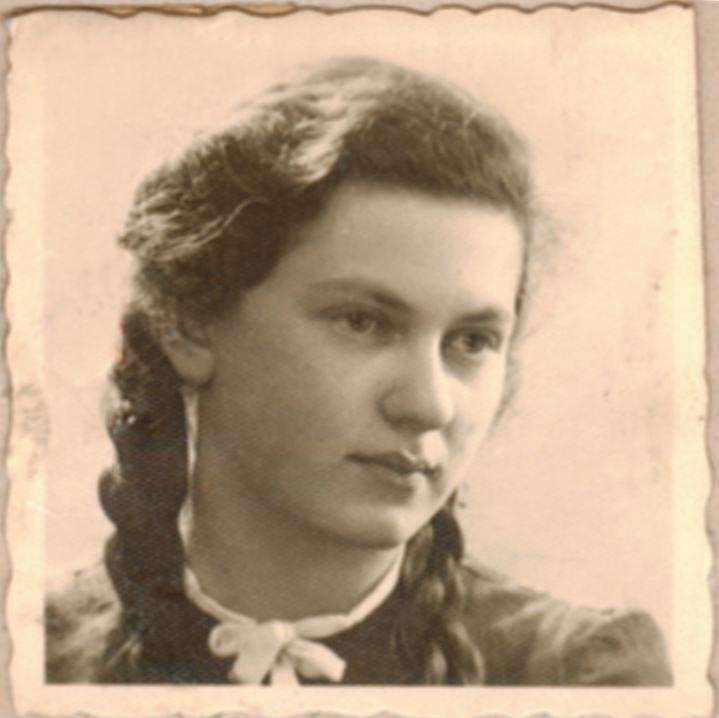
Halina Wohlfeiler, Rena’s sister, Krakow around 1941, the property of the National Archives in Krakow

Czarno-białe zdjęcie portretowe siostry Reny – Haliny Wohlfeiler. Fotografia przedstawia ją od ramion w górę. Dziewczyna ma około trzynastu lat, długie, ciemne włosy zaplecione w dwa warkocze, symetryczne usta i trójkątny kształt brwi. Ubrana w sukienkę wykończoną białą kokardką pod szyją.
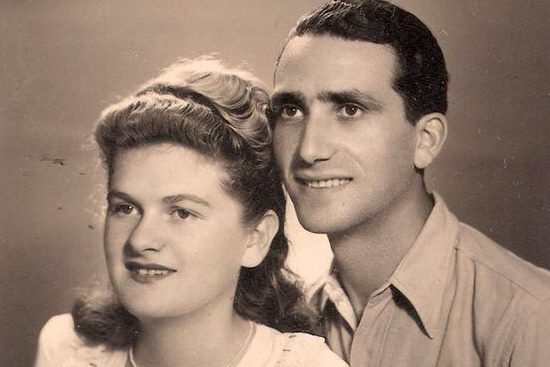
Rena with her husband Ignacy Birnhack, after 1945, private property

Czarno-białe zdjęcie portretowe młodej Reny wraz z mężem – Ignacym Birnhackiem. Pozują na jednokolorowym tle, kadr obejmuje ich od pasa w górę. Kobieta ma jasne zaczesane do tyłu włosy. Ubrana jest w białą koszulę z krótkimi rękawkami wykończoną ozdobną koronką i kwiecistą spódnicę. Mężczyzna obok ma czarne, krótkie włosy oraz nisko osadzone brwi. Ubrany jest w jasną koszulę.

Halina and Róża Wohfeiler with Oskar Schindler, Haifa 1965, private property

Czarno-białe zdjęcie Haliny i Róży Wohlfeiler z Oskarem Schindlerem w Hajfie. W tle rosną wysokie rośliny. Kobiety siedzą a mężczyzna stoi nad nimi – ujęty jest od pasa w górę. Róża ma siwe włosy, a Rena lekko posiwiałe, zaplecione w dwa warkocze. Ubrana jest we wzorzystą sukienkę bez rękawów. Oskar Schindler ma siwe włosy i gęste, jasne brwi. Ubrany jest w białą koszulę polo.
